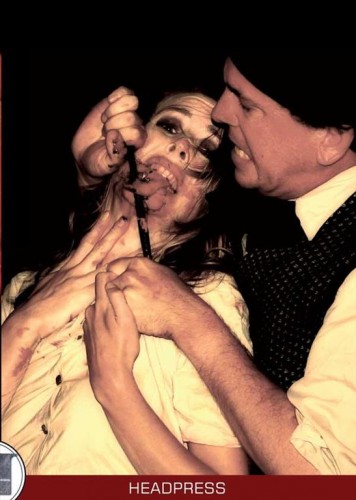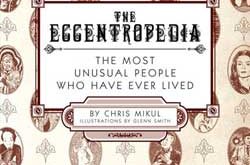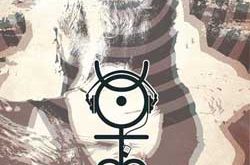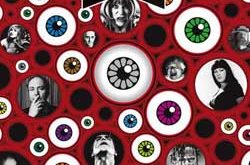 This beautiful hard cover release is actually the first I’ve seen of the “head press” magazine article releases. It’s binding and full color printing is a “must see” that captures all the elements of what a cooly designed and written book “should” be. This edition “Headpress 2.6” is noted as being split into 2 parts, so to speak. The first half to the book covers several articles and research into the “Grand Guignol” (and is identifiable in its black pages).
This beautiful hard cover release is actually the first I’ve seen of the “head press” magazine article releases. It’s binding and full color printing is a “must see” that captures all the elements of what a cooly designed and written book “should” be. This edition “Headpress 2.6” is noted as being split into 2 parts, so to speak. The first half to the book covers several articles and research into the “Grand Guignol” (and is identifiable in its black pages).
You might say the first half of the book is a perfect match for horror enthusiasts. However it’s also about education and reporting (of which I’ve learned a few things myself) on this bizarre theatre horror show. The Grand Guignol” has received much support over its long history in theatre. Dating back to the 20’s, we are told about its plays, its performers, its stories and its live presentations. In essence, the plays would cover shorts that took on materiel such as X-rays, dismemberment and odd curiosity subjects that escalated often into a showcase of violent bloody bliss. Focus articles detail Frederick Whitney and Charles Schneider who contribute greatly to this theatre carnivale of sorts.
While eloquently designed and picture-filled, I recommend these sections in decent lighting as the red “questions” type is hard to see otherwise.
The research doesn’t end there as it follows into the famed film “The Wizard of Gore”, Hershell Lewis’s cinematic gore extravaganza. Following, we enter into the realm of exploitation cinema inspired by this dark movement in theatre. Films such as “The Sinful Dwarf” and the oddly sinister but strangely darkly comedic “Bloodsucking Freaks” are explored. It’s a great article on how the 70’s found its footing within this dark corner of the genre which leads up to today’s more modern torture exploits. While all quite controversial, they do set the trends for generations to come. A quick look at the 70s influence will surely keep you educated on how this cultural movement has evolved over the years.
The 2nd half takes on a lighter approach with an interesting article on Philip K Dick. There are more cultural driven articles that explore subjects such as “Angry Women” and the “Chocolate log???”, however I tend to favor the article on the lost and somewhat enigmatic magazine “Cracked”. Many, like myself find out a bit where this obvious “Mad” competitor came from and how the artistry has changed over the years. The mag was an essential part of my youth and often frequent purchase that kept my laughing issue to issue. This short but detailed article does a pretty great job at laying a bit of the mystery years information that alluded many of us.
While I’ll admit not knowing too much about the culture for this myself, this edition of Head press should perfectly serve as your hardbound Wikipedia-like overview. You will of course have to take notice to the release’s violent lip puncturing cover which while still a prop is quite a table book compositional indulger of sorts. It was also thru this article that I began to look into some of the filmmakers and talents involves over the years with its various aspects. A good source of reading and inspiration (for those inclined).
Buy the Book!
I’ve included a brief overview provided by the publishers below:
In part one, David Kerekes takes to the London ‘blood scene’ (‘The Grand Guignol is Dead and Living in London’), which also includes an interview with Tom Richards and Stewart Pringle of Theatre of the Damned). Stewart Pringle then talks about Frederick Witney, Britain’s forgotten master of the Grand Guignol. We turn our attention Stateside hereafter, to the roots of the Grand Guignol revival, by way of Kerekes’ own peculiar interest in the photograph that adorns this month’s cover and an interview with actor, writer and stage director Charles Schneider. We round out this section with a look at Grand Guignol horror film, notably an ode to H G Lewis’ existential The Wizard of Gore by John Harrison and Joel M Reed’s filthy Blood Sucking Freaks by Dr Spike. Spike also addresses Grand Guignol’s influence on the wider culture of Times Square and sleaze in 1970s America.
As a very special Théâtre du Grand Guignol bonus, we have reproductions of pages from an original 1927 theatre programme tucked away at the back.
The second part of Headpress 2.6 opens with James Reich discussing the work of Philip K Dick and its place in the California eugenics program, an article illustated by Michael Robinson. John Szpunar considers the so-called humour magazine Cracked (a mirror to modern culture and history), by way of an interview with Mark Arnold, the author of two very big books on the subject. Szpunar then teams up with Melanie Danté for an archive interview with V Vale of the inestimable publishing house RE/Search, while Gavin Baddeley interviews Adam Parfrey of Feral House. Rounding out this section, Thomas McGrath dissects the latest in a growing line of writers he has known. Illustated by Dan White.
Book Review: Headpress 2.6 – Editor David Kerekes
 Horror News | HNN Official Site | Horror Movies,Trailers, Reviews
Horror News | HNN Official Site | Horror Movies,Trailers, Reviews


